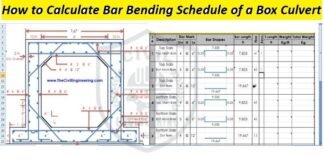Seismic Proof Construction And Technical Terms
Earthquakes occur in different parts of the world. Some of them are so light that they are not even noticeable and some are so severe that cities are completely destroyed. Which corresponds to the energy released as a result of an earthquake. Introduction Seismic Proof Construction |Seismic Proof Construction |Technical Terms For Seismic Proof Construction |Seismic Proof Construction And Technical Terms.
Introduction Seismic Proof Construction
Earthquakes occur in different parts of the world. Some of them are so light that they are not even noticeable and some are so severe that cities are completely destroyed. Which corresponds to the energy released as a result of an earthquake. The worst earthquake in the history of the world occurred in 1960 in Chile (South America). Its magnitude was 9.5 on the Richter scale. The most devastating earthquake of the 20th century occurred in China in 1976 with a magnitude of 7.7. An earthquake in 1935 severely damaged Quetta (Pakistan). Similarly, a 7.6 magnitude earthquake in 2005 devastated northern Pakistan and Kashmir. Worldwide, 200 earthquakes of magnitude 6, 10 of magnitude 7, and one of magnitude 8 are expected each year. But their exact location and time have not yet been determined.
There are many reasons for earthquakes. The biggest reason for this is the collision of the tectonic plates that divide the earth into different parts. About 70% of the earthquakes that occur each year, occur around the Pacific Plate, while 20% occur on the southern edge of the Eurasian Plate, which runs through the Himalayas. The remaining 10% come from different places in the world.
Seismic-proof construction requires some additional steps, which increase the cost of the building marginally while protecting the building from severe damage caused by an earthquake. For this, while designing the foundation of the building, the bearing capacity factor of safety for the earth is increased by 30 to 50%. The foundation is reinforced, for which the Raft Foundation is designed for ordinary buildings, or the Inverted T- Beam is designed. Pile Foundation is designed for multi-story buildings. Large double-reinforced beams are designed to support the slab. Beams and slabs are made monolithic.
The slab uses extra diagonal steel. The ratio is kept at a maximum of 1: 3 in the length and width of the building and an attempt is made to keep the center (C.G) of the building closer to the ground. The edges of the curtain walls are well attached to the columns. And the columns provide additional lateral ties to withstand the shear force. And shear walls are also built in suitable places. Spaces for doors and windows are chosen in such a way that the structure does not weaken.

Technicals Terms For Seismic Proof Construction
The following are some important technical terms related to Earthquake and Seismic Proof construction.
Learn More
Calculate The Volume of Sand Aggregates In the Dipper Truck
Calculate The Estimate of Wall Plaster
Important Principles For Design The Column
1. Damping
The ability to reduce the friction between the particles in the ground due to incomplete elasticity, slipping, and sliding of the soil is called damping.
2. Critical Damping
Minimum resistance to the vibration that can prevent oscillation. This is called critical damping.
3. Focus Point
The center of the earthquake is called the focus point.
4. Epicentre
The point on the surface of the earth just above the focus point is called the epicenter.
5. Epicentral Distance
The horizontal distance from the epicenter to the desired place is called the epicentral distance.
6. Focal Depth
The vertical distance to the epicenter and focus point is called Focal Depth.
7. Intensity of Earthquake
The effect of an earthquake felt at a place is called the Intensity of the Earthquake. It is represented by the Mercall Scale. Earthquake damage is measured by its magnitude.
8. Magnitude of Earthquake
The magnitude of an earthquake is expressed according to the Richter Scale. Its magnitude is higher at the epicenter of the earthquake and decreases with increasing distance from the epicenter. The magnitude of an earthquake is derived from the energy released at the site of the earthquake.
9. Seismic Coefficient
The ratio between the expected acceleration during an earthquake used in the design and the acceleration due to gravity is called seismic co-efficient. If this ratio is up to 0.0005 then the earthquake is not felt at all and if this ratio is up to 0.5 then there will be great destruction due to that earthquake.











